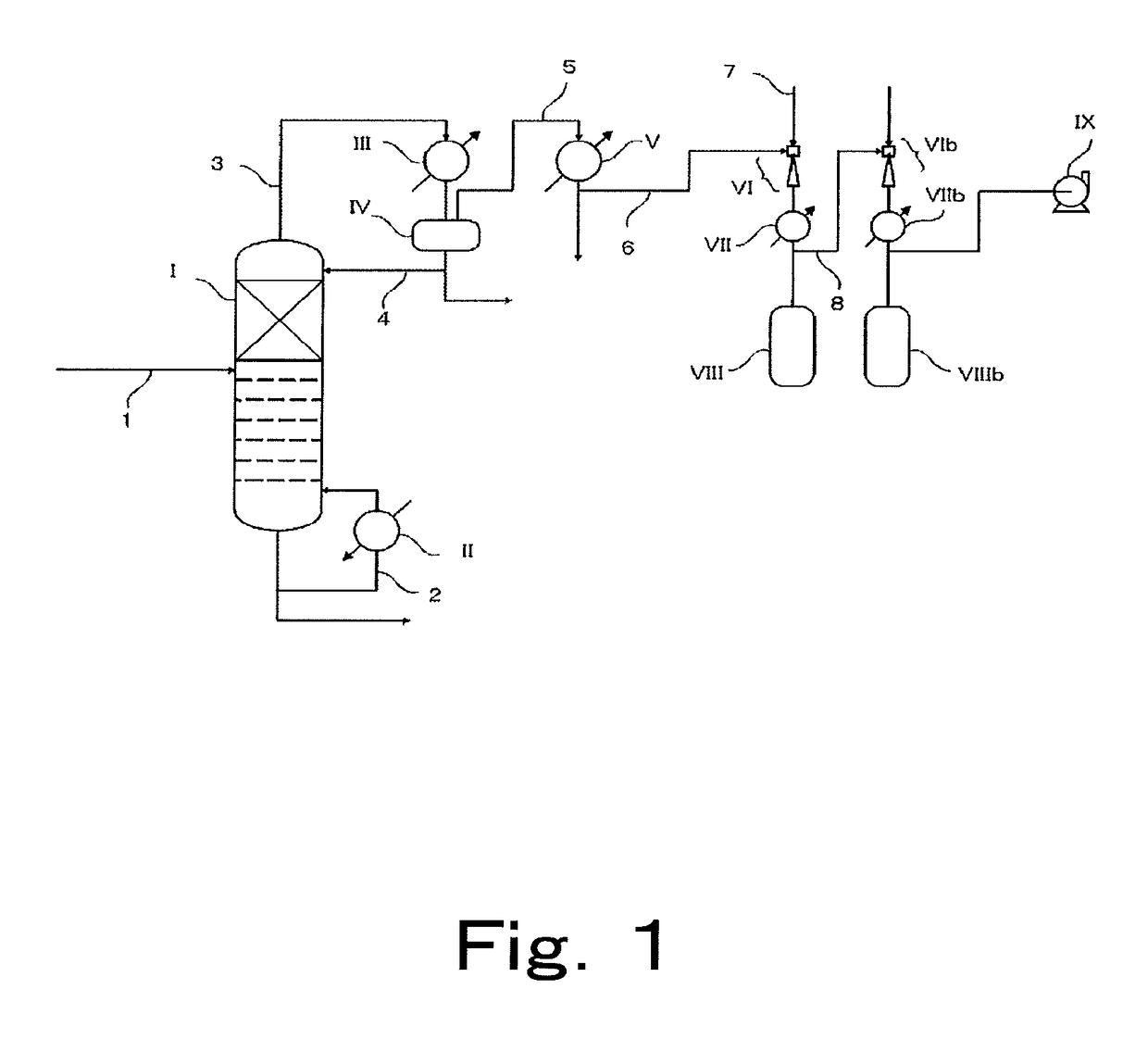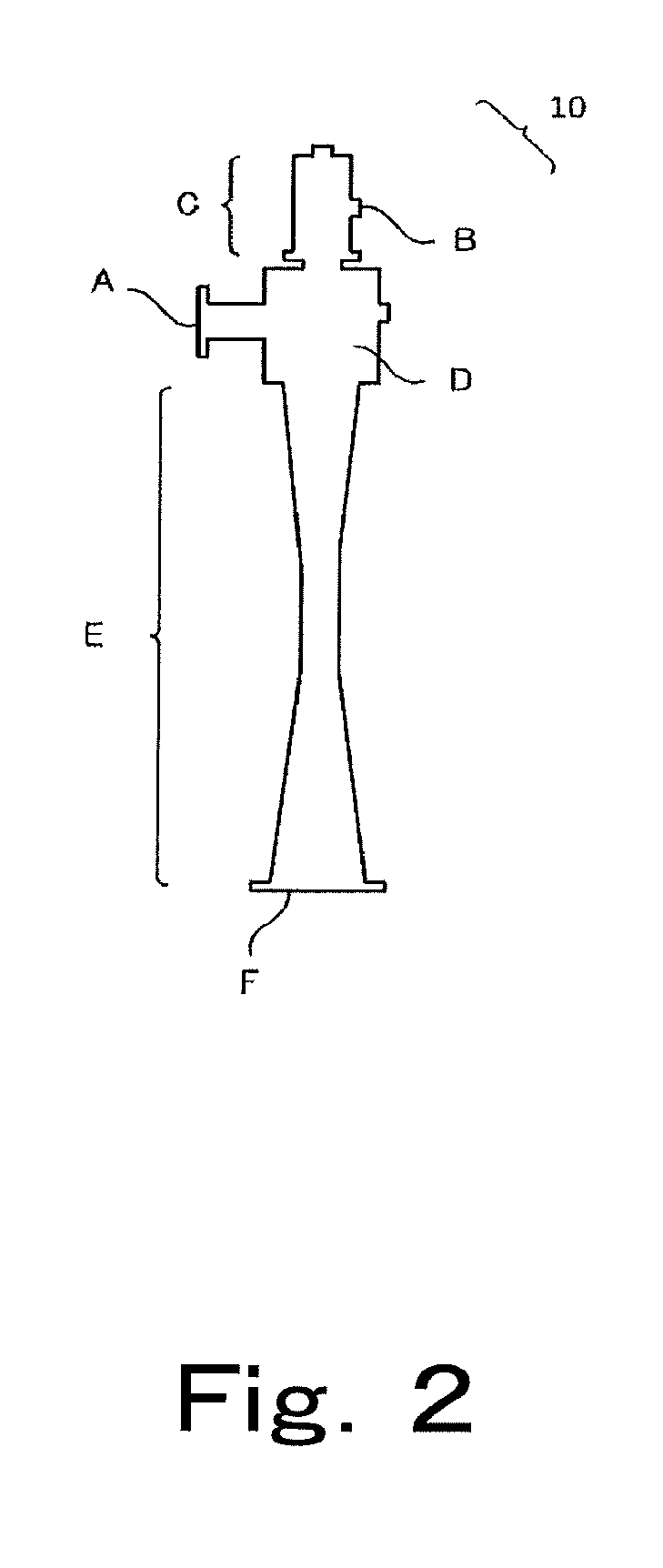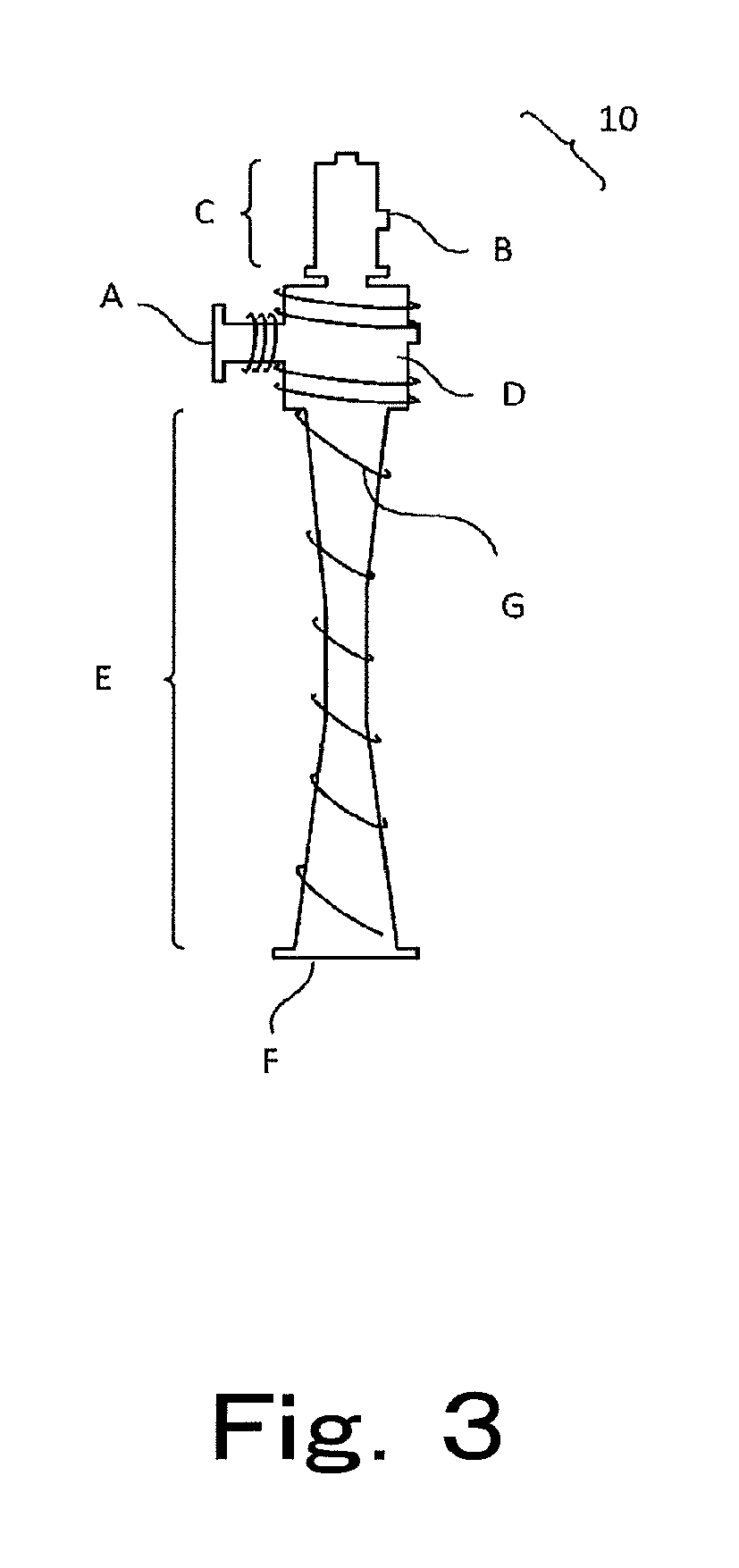Vacuum distillation method for easily polymerizable compound and method for producing acrylic acid
a vacuum distillation method and compound technology, applied in vacuum distillation separation, carboxylic compound preparation, machines/engines, etc., can solve problems such as acrylic acid polymerization, and achieve the effects of easy polymerizable compound, easy polymerizable compound, and easy polymerizable compound
- Summary
- Abstract
- Description
- Claims
- Application Information
AI Technical Summary
Benefits of technology
Problems solved by technology
Method used
Image
Examples
referential example 1
[0070]The distillation column was operated in the same manner as that in Comparative Example 1 except that the driving steam in the steam ejector was at 1.0 MPaG. A duration after cleaning of the steam ejector and before a decrease in CV opening angle was three weeks and five weeks, exhibiting no improvement.
example 1
[0071]Example 1 was similar to the above-described Comparative Example 1 except that the steam ejector was operated with the outer surface of the inlet port, the outer surface of the vacuum portion, and the outer surface of the diffuser of the steam ejector at the first stage and the second stage heated using a steam trace as depicted in FIG. 3. Steam used for the steam trace was at 0.3 MPaG. The outer surface temperature of the inlet port of the steam ejector was 70 to 85° C. During eleven months of continuous operation, no definite decrease in CV opening angle was observed. When the operation was continued for six months, the steam for the trace was stopped for two days with the pipe of the steam trace remaining unchanged. Then, supply of steam was resumed. No significant difference was observed between a state before the resumption and a state after the resumption. As described above, heating the outer surface of the steam ejector has been clarified to be particularly effective f...
PUM
| Property | Measurement | Unit |
|---|---|---|
| boiling point | aaaaa | aaaaa |
| temperature | aaaaa | aaaaa |
| temperature | aaaaa | aaaaa |
Abstract
Description
Claims
Application Information
 Login to View More
Login to View More - R&D
- Intellectual Property
- Life Sciences
- Materials
- Tech Scout
- Unparalleled Data Quality
- Higher Quality Content
- 60% Fewer Hallucinations
Browse by: Latest US Patents, China's latest patents, Technical Efficacy Thesaurus, Application Domain, Technology Topic, Popular Technical Reports.
© 2025 PatSnap. All rights reserved.Legal|Privacy policy|Modern Slavery Act Transparency Statement|Sitemap|About US| Contact US: help@patsnap.com



